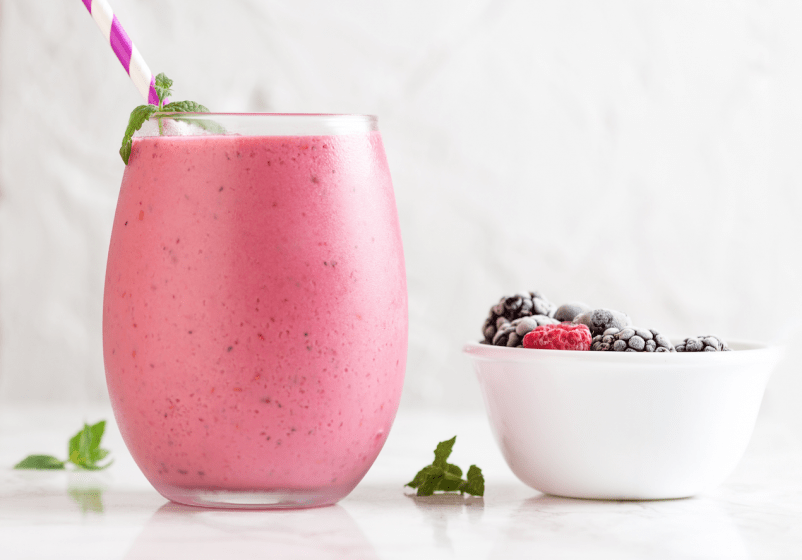Smoothies vs Juicing
Which should you choose?

Both are great ways of getting more fruit and veg into your diet but there are certain things to be aware of with each of them in order to keep them a healthy option.
Smoothies
When you make a smoothie, the whole lot is whizzed up in a blender, keeping both the juice and the pulp. This means that smoothies contain fibre. Fibre is good for you for so many reasons. It’s great for the digestive tract, helping to bulk out stools and keeping you more regular. When it comes to weight loss, fibre is super helpful. It slows down the absorption of sugar into the body, meaning that fruit and sugar-rich vegetables like beetroot and carrots are less likely to give you a blood sugar spike, albeit a natural one. Dietary fibre also activates a few hormones really helpful in weight loss (called PYY and CKK and GLP-1). These are appetite suppressors, meaning you’ll want to naturally eat less the more veg you consume. Fibre also decreases levels of the hunger hormone ghrelin, and increases another hormone called leptin, which tells your body you’re full. So all in all fruit and veg are the good guys.
Fibre isn’t the only good thing in a smoothie. They have a higher concentration of the beneficial phytochemicals than juices. These are primarily found in the fibrous membranes of the fruit and are retained in the pulp when blended. Given a smoothie can be packed with fibre, it can even serve as a meal replacement if you’re smart about what you add to it (breakfast would be the perfect example). If you combine fruit and veg with a healthy source of protein, such as Greek yoghurt, a tablespoon of nut butter or a handful of nuts and seeds, you will have a healthy nutritious and filling meal to take with you on-the-go. You could even add a protein powder of your choice.
If your idea of the perfect smoothie is only fruit and some liquid, well that’s a sugar bomb waiting to happen and is likely to upset your blood sugar balance. Plus, if consumed too frequently, this will have you start piling on the pounds.
Juices
When you juice*, your juicers extract the water and nutrients from what you feed it, leaving behind the pulp. Many juicers will also have a filter attachment, so you can remove even more ‘bits’ from your juice. Juices therefore contain very little fibre. Given the lack of fibre, juices provide an almost immediate energy boost.
The bulk of the vitamins and minerals found within a fruit are typically in the juice rather than the fibrous pulp and without the fibre, the nutrients are absorbed into the body more efficiently. Additionally, the digestive system doesn’t have to work hard at all to process what you’re consuming. Juicing also allows you to eat a far higher range of nutrients from leafy greens and vegetables you wouldn’t normally eat in such quantity, like cabbage and wheatgrass.
However, some commercial fresh juices contain as much, or even more, sugar than fizzy drinks. A study in 2014 found that, on average, fruit juices contain 45.5 grams of fructose per litre, not far off from the average of 50 grams per litre in fizzy drinks.
So Which To Choose
It really depends on what your health goal is. Juicing offers the possibility of getting in a greater concentration of nutrients, increasing your fruit and vegetable consumption, and possibly making it easier on your tummy if you have a hard time digesting the fibre in vegetables. On the other hand, fibre is SUPER important in your diet and in juices you are missing out. Plus you could also be losing other important elements like antioxidants and phytonutrients.
For weight loss, the added fibre in smoothies is a huge bonus for balancing your blood sugar levels. You can also add in other beneficial ingredients like collagen (for arthritis suffers), protein powders, prebiotics, nuts or seeds. Ultimately, if you need to increase your fruit and veg intake, both smoothies and juices give you options. Just make sure you make your own, as many shop bought varieties tend to be high in sugar. So go easy on the fruit and don't forget to add in your veggies.
* By juicing I am referring to using a juicer to extract the juice from fruit and veg.



